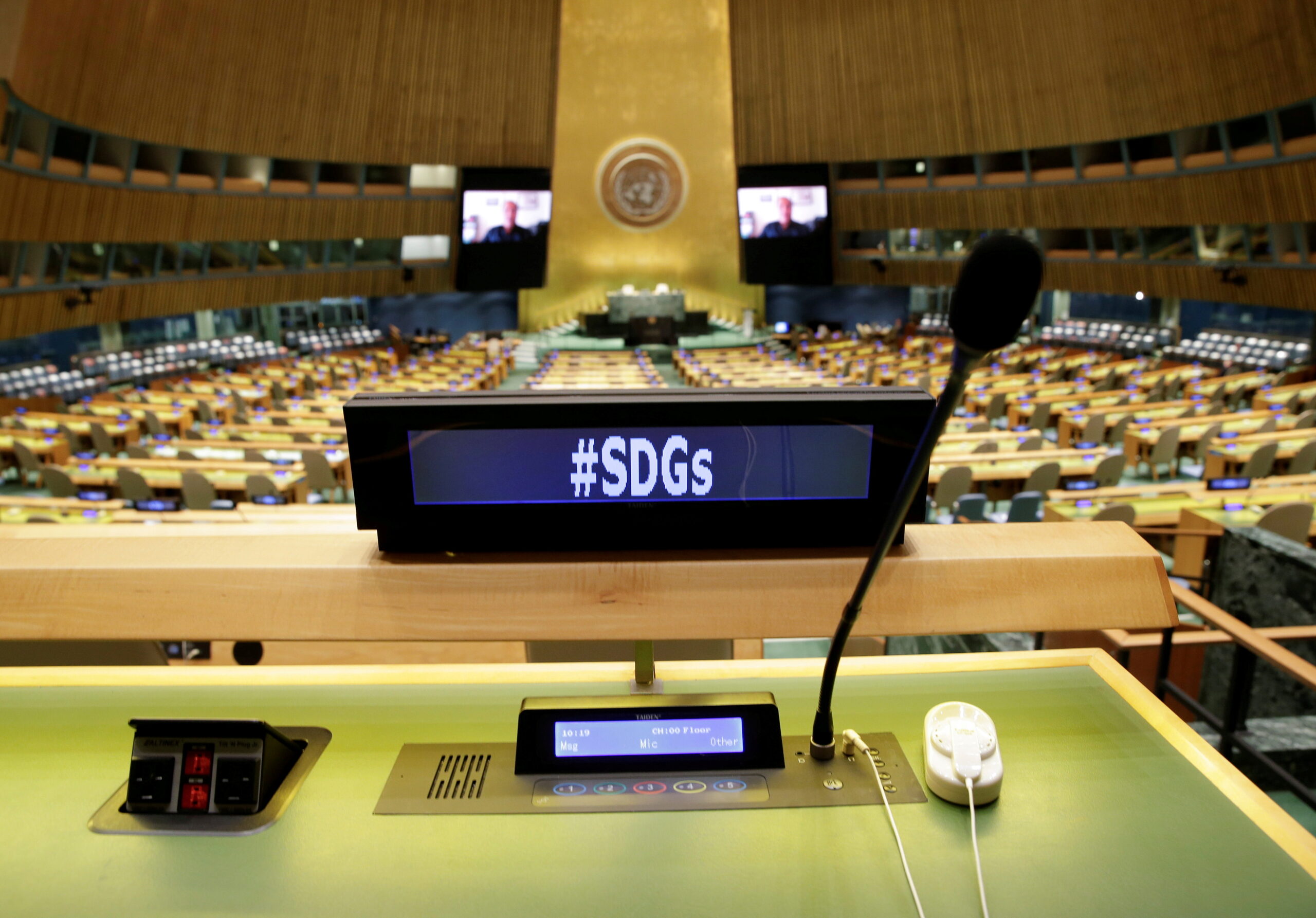April 23, 2025
How the US retreat from the UN endangers the future of internet governance
This month, an obscure and mundane United Nations (UN) process became the political battleground for the future of internet governance.
The Commission for Science, Technology, and Development (CSTD) is a subsidiary body of the UN Economic and Social Council and is tasked with providing high-level advice on science, technology, and innovation policy issues. The Commission is the primary body responsible for overseeing the follow-up to the World Summit of Information Society (WSIS), the UN process that for the past two decades has guided the nexus between the internet and development and has legitimized the internet’s multistakeholder model. The CSTD is responsible for monitoring implementation efforts, gathering input from countries, and organizing sessions to assess WSIS’s global progress.
The WSIS, which the UN created twenty years ago, enshrined the principle that internet governance should be multistakeholder and bottom up. The collaborative nature of the internet’s management has been instrumental in its rapid expansion, its resilience, and its economic success. WSIS has also shaped national policies, prompting governments to embrace inclusive and collaborative forms of governance, creating an environment in which businesses, civil society, engineers, and academia help shape internet policies and help manage the internet’s critical resources. This year, the entire WSIS architecture is under review by the UN, and the CSTD meeting the week of April 7-11 was one of the checkpoints.
Under normal circumstances, CSTD sessions are colorless affairs. Member states (and a few other stakeholders) gather for a week-long meeting in Geneva that includes long speeches, panel discussions, and a two-day negotiation process that concludes with the adoption of two resolutions: one on WSIS and one on science, technology, and innovation.
This year, however, things were different. What used to be a pretty predictable process—in which the participating countries coordinated to promote human rights, the UN sustainable development goals (SDGs), gender equality, and ways to address climate change—is no more. For the first time in the CSTD’s twenty-year history of reviewing the WSIS, the United States called for a vote, instead of working with the other governments, including its own allies, towards a consensus. And, even though the United States lost the vote thirty-three to one, the damage was done.
In calling for a vote, the United States opened a can of worms. For the past two decades, the CSTD has produced a resolution that is consensus-based. Over the years, the resolution has become long and dense, but its main attribute has been that it has always reflected a spirit of collaboration and the willingness of member states to work together toward the final outcome. Moreover, the United States has long been a driver of this consensus-based approach by insisting on language that was geared towards inclusive governance. This year, however, the United States appears to have come into the meeting with the intention not to collaborate. Instead, it challenged the resolution because it included references to the SDGs, climate, and gender. In its intervention, the United States stated that it
“has made clear that we will no longer affirm the 2030 Agenda for Sustainable Development and the Sustainable Development Goals (SDGs) as a matter of course, and this process should not link itself with programs like these that are inconsistent with state sovereignty. Regarding general references to climate change, we suggest the WSIS process focus on its actual goal of ensuring digital technologies can usher prosperity for people around the world. We strongly support protecting women and girls, defending their rights and promoting women’s empowerment, but cannot endorse any work or programming that supports diversity, equity, and inclusion policies that stigmatize or demean people because of their race or sex.”
.
Similar actions are happening across the UN, not exclusive to the CSTD. It is a significant departure from US policy in recent decades, and it is worth looking at in more detail for its broader implications.
A new agenda
By denouncing the SDGs and the 2030 Agenda, the United States believes that it is supporting its national interests and sovereignty. In reality, however, it is shutting the doors to collaboration with all the countries that have made the sustainable development agenda a core part of their foreign policy. It is isolating itself in the UN space and potentially ceding control to China and Russia while endangering the entire WSIS architecture, specifically the multistakeholder model. Although the United States did point out during the meeting that “we must protect . . . the multistakeholder model,” in the end, US actions spoke louder than its words.
For countries in the global majority, the multistakeholder model means little if the internet and other emerging technologies, such as artificial intelligence, are not linked to the development goals. For countries in the global majority, which have asserted that the multistakeholder model is another expression of the West’s dominance in the governance of the internet, the United States turning its back on the development agenda likely confirms their suspicion.
China understands this well and, over the past few years, it has worked hard to establish itself as the champion for the development agenda in the UN system. In fact, China now appears to be one of the strongest voices for the SDGs. Only last year, Chinese President Xi Jinping announced a twenty-million-dollar contribution to the UN Conference on Trade and Development, which provides substantive support to the CSTD, aiming to support the implementation of the 2030 Agenda for Sustainable Development.
Countries in the global majority are taking note of this seismic shift. As developing countries are waking up to the reality that their biggest and long-standing friend and ally is abandoning them in its foreign policy retrenchment, leaving them behind faster than anyone anticipated, they are looking elsewhere for comfort and assistance. China appears eager to step up—in exchange for votes within the UN. The signs of the Group of Seventy-Seven developing countries gravitating toward China have been apparent for quite some time now, but the United States’ new foreign policy will likely push the group faster and more decisively toward the world’s second largest economy.
This reversal of US policy on the SDGs is creating a whole new set of dynamics. The Western alliance is gradually losing its influence, resulting in its messaging around the internet and the need for multistakeholder governance to also be losing impact. The United States’ ability to influence how countries react, who they follow, and how they will ultimately vote is diminishing, as we saw both during the Global Digital Compact negotiations and the CSTD vote. For China and Russia, whose intention has always been to use the UN to exert control over the internet, this goal is increasingly within reach.
Since the early days of WSIS, the United States has advocated for the internet as a means for advancing development goals through inclusive and collaborative governance. For years, the US government has been a strong advocate for the inclusion of civil society in internet governance discussions, giving voice to a swath of organizations advocating for human rights, gender equality, and other social issues. It was a strategy aimed at promoting the internet’s bottom-up, inclusive, and collaborative governance model across the world, through coalitions and relationships that were based on a shared vision for an internet that was democratic and supportive of all people. This vision has been the driver for the United States becoming a pioneer of innovation and of using the internet to empower people while bringing development and ensuring economic growth.
Which model will prevail?
The decision, therefore, for the United States to shift its UN strategy couldn’t come at a worse time. Currently, there is a sense of unease among nonstate actors and other Western governments as to whether the United States will continue to steer the international community toward supporting the open and global internet, or whether the “China model,” which is based on closed and top-down government control as well as a complete disregard for human rights, will prevail.
There is no denying that the governance of the internet and digital technologies is changing fast. The number of multitakeholder gatherings involving governments alongside civil society, businesses, and engineers is shrinking while the number of multilateral processes is increasing both in volume and importance. Now is not the time for the United States to take a step back from the multilateral system or to abrogate its support for the SDGs. The United States should be building coalitions and encouraging collaboration across governments to ensure that our digital future is not sketched through the lens of authoritarian ideologies; it must double down on a digital policy that is fostering an open, collaborative, and inclusive internet governance environment.
If US officials expect that ditching the SDGs will paralyze the United Nations or will steer sustainable development away from its current course, then they are deeply mistaken. China seems more than prepared to step in to fill any leadership gaps created by such disconnection. By stepping away, the United States is not asserting its position; on the contrary, it is opening the doors to China and Russia to determine the rules of the international order.
Konstantinos Komaitis is a resident senior fellow with the ’s Democracy + Tech Initiative at the Digital Forensic Research Lab (DFRLab). He previously served as a senior director at the Internet Society, where he led initiatives on connectivity, regulation, and internet governance, including the Internet Assigned Numbers Authority (IANA) transition.
Wed, Feb 12, 2025
Global Foresight 2025
Strategy Paper Series
By
In this year’s Global Foresight edition, our experts share findings from our survey of global strategists on how human affairs could unfold over the next decade. Our team of next-generation scholars spot “snow leopards” that could have major unexpected impacts in 2025 and beyond. And our foresight practitioners imagine three different scenarios for the next decade.
Image: A view of empty desks at the UN General Assembly Hall as speakers deliver remarks remotely at the SDG Moment event as part of the UN General Assembly 76th session General Debate at the United Nations Headquarters, New York City, U.S., September 20, 2021. John Angelillo/Pool via REUTERS








